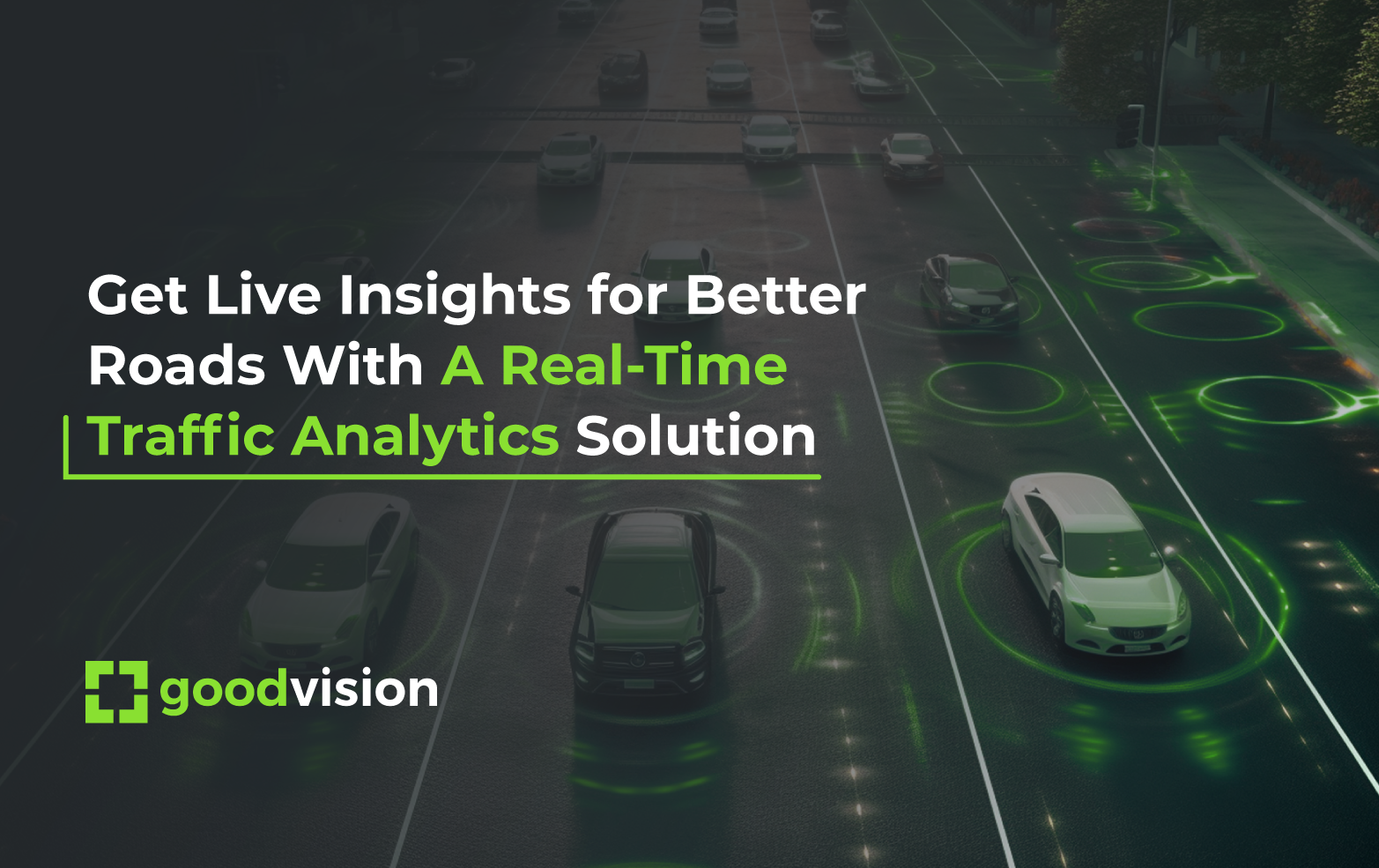Get Live Insights for Better Roads With A Real-Time Traffic Analytics Solution
Limited lanes, lights, signs, and an overwhelming number of vehicles rushing in from each direction—that’s the recipe for a perfect storm or an all-but-perfect intersection such as the infamous Meskel Square in Addis Ababa.
But other examples prove that too much of the good can be just as bad. Moscow’s Taganskaya Square, for instance, actually consists of two intersections with 11 roads coming in and out, resulting in a true driver’s nightmare.
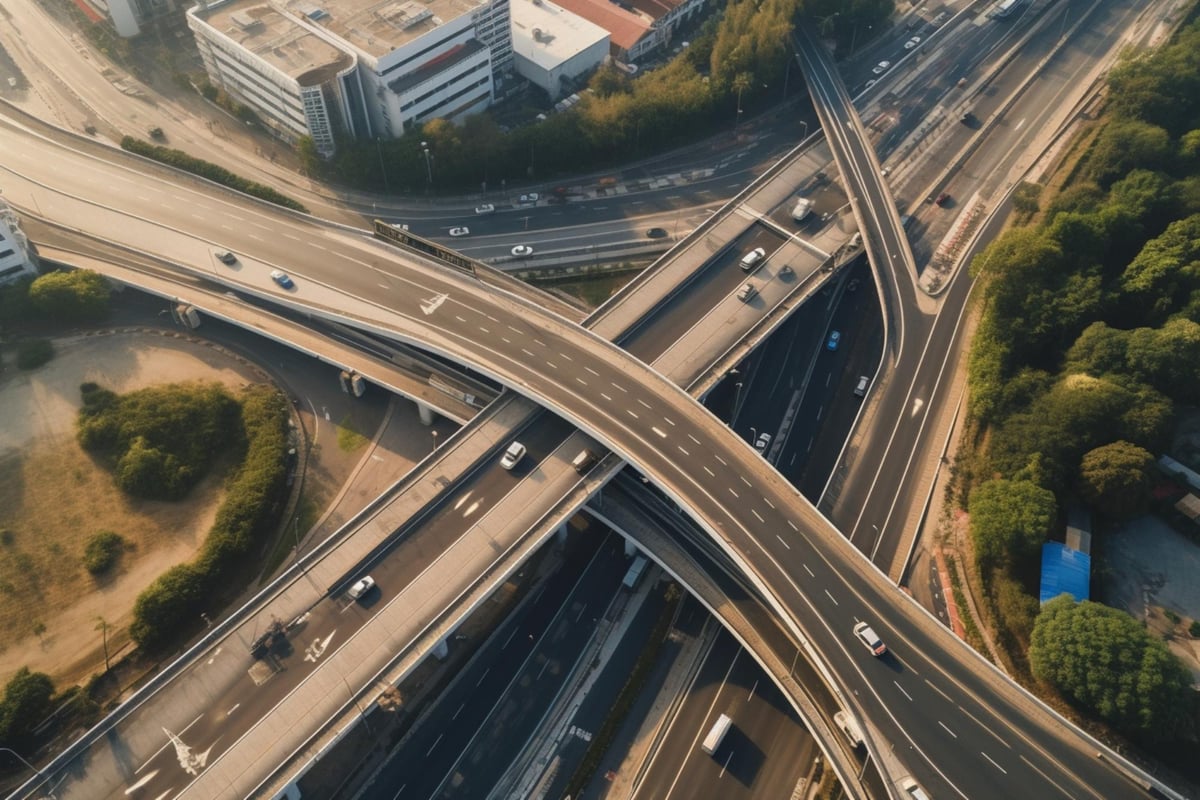
Similarly, disorganised and complicated intersections haunt traffic controllers and planners at night. Taming the ever-shifting traffic chaos seems impossible. Seems.
Here, technology comes to the rescue with a tool that allows for reacting to traffic events faster than ever before - real-time traffic analytics. We’ll shed some light on this solution and discuss how it can revolutionise traffic monitoring, control, and management in a smart but cost-efficient way.
Challenges to solve with real-time traffic analytics
Safety, road condition, and traffic efficiency are in everyone’s best interest, whether it’s municipalities, traffic professionals, or road users.
But in reality, many obstacles stand in the way of optimising traffic:
- First, there are financial costs generated by accidents and inefficient road usage. It’s estimated that in 2019 alone, traffic crashes cost US taxpayers $340 billion. On the other side of the pond, the UK needs to spend nearly £13 billion total for road repairs and maintenance.
- Sustainability is another concern. WHO reports air quality doesn’t meet the recommended norms in 83% of high-income and 99% of low-income cities. Congestion is a major contributor here, and traffic managers and planners stand at the forefront of the fight against transportation-induced air pollution.
- Cities keep evolving ever more dynamically, and keeping up with new investments and developments means planners and traffic managers have a lot on their plate.
- Finally, accounting for new mobility trends and innovation becomes increasingly challenging. With over 17% yearly growth, the micro-mobility market is rapidly rising, and cities must adapt. IoT-based smart city technologies open up new possibilities for traffic management. However, taking advantage of these new opportunities demands a thorough understanding of the urban landscape and sometimes costly adjustments to the current infrastructure.
.jpg?width=1200&height=800&name=automobile-congestion-in-the-morning-rush-hour-2021-08-26-17-53-07-utc%20(1).jpg)
Thankfully, video traffic analytics provides insights into the traffic situation, helping municipalities and traffic professionals find solutions to all of these problems. For many traffic challenges, retrospective analysis that considers historical recordings is the perfect answer. But for more time-sensitive issues, traffic professionals need a tool that would allow them to react faster and make decisions on the go, such as a real-time traffic management system.
As managers address existing problems, new issues arise
Several problems arise with conventional real-time traffic analytics technologies, such as in-road magnetic loop sensors.
- High cost and challenging installation. Firstly, traditional traffic analytics technologies are expensive and problematic to install and maintain. Every time a municipality wants to set up a new sensor or repair a damaged one, it needs to tear the road surface and lay it again afterwards. The road section must be closed during maintenance or installation, disrupting traffic and potentially creating congestion or inconvenient reroutes.
- Semi-manual, slow processes. Moreover, data captured in real-time must still be monitored by human traffic controllers who decide when to react to traffic events. Many traffic centres are already understaffed, and any further workloads stretch their personnel even thinner, especially in the case of large urban areas.
- Imprecise data. Lastly, magnetic loops can’t record all the data needed for a precise traffic analysis. For instance, they don’t recognise pedestrians, lighter vehicles like bicycles, or sometimes even motorcycles. Regarding other vehicles, magnetic loops still can’t capture movements per lane and details such as licence plate number or appearance.
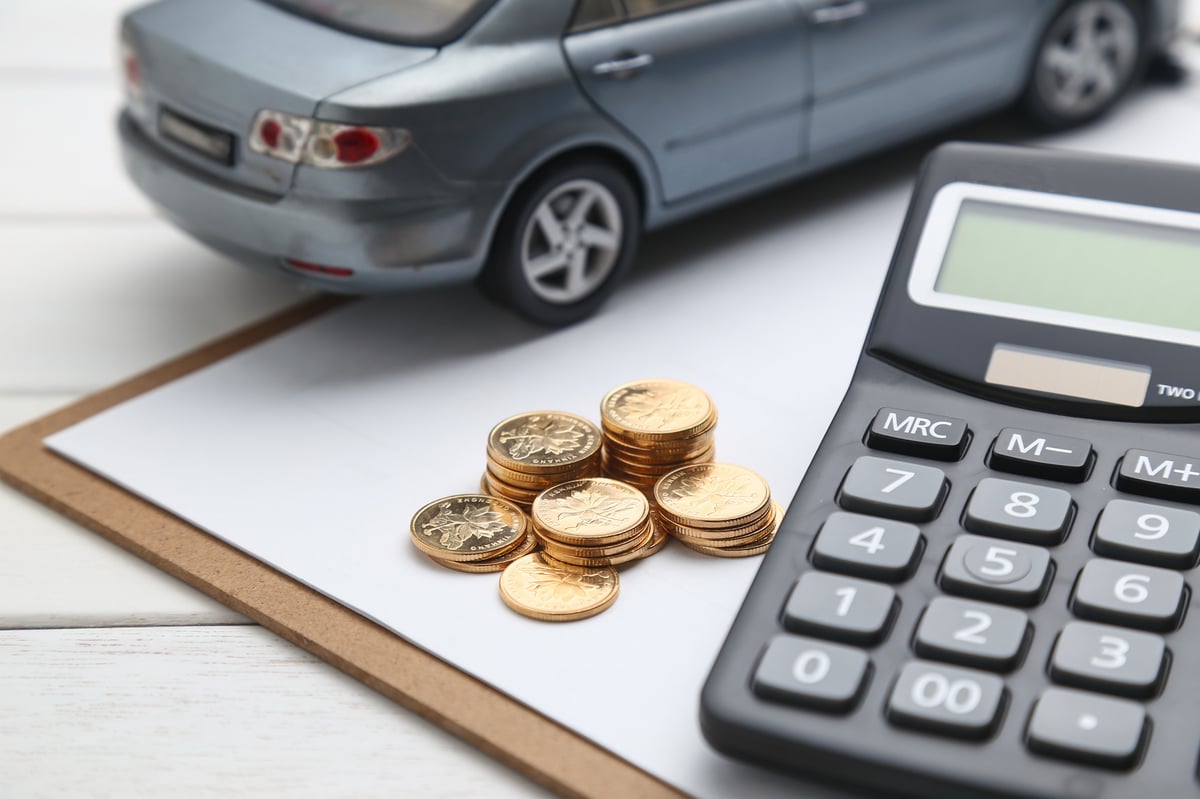
Other solutions are even more specific and only capable of recording particular information. Licence plate-reading cameras are limited to licence numbers, while radars are precise regarding speed but incapable of capturing vehicle type or appearance. So, to record all traffic data, municipalities and traffic surveyors have no choice but to weave together a patchwork of solutions, which is both ineffective and costly. Or do they?
An answer to unanswered questions: adaptive real-time traffic control
When paired with trained AI algorithms, video analytics solutions such as GoodVision Live Traffic can replace all traditional real-time traffic data tools.
Video-based real-time traffic management system: how does it work?
Live Traffic uses live camera footage to provide traffic data from a selected road section in real-time. One of its advantages is the fact that it can use the existing CCTV equipment that, in many cases, is already placed at crucial locations such as busy intersections, which significantly reduces setup costs.
The camera is paired with an EDGE computing device deployed near the camera that uses our proprietary AI-based detectors to process the recordings on the spot. Each processing unit can process up to 4 traffic streams, depending on the device model.
The third component is the internet connection. Although the captured traffic data is processed in the computing device, it’s immediately available in the cloud, on the Video Insights analytics platform.
The combination of all three components makes up for a real-time traffic solution that’s fast, reliable, and records granular event data instantly.
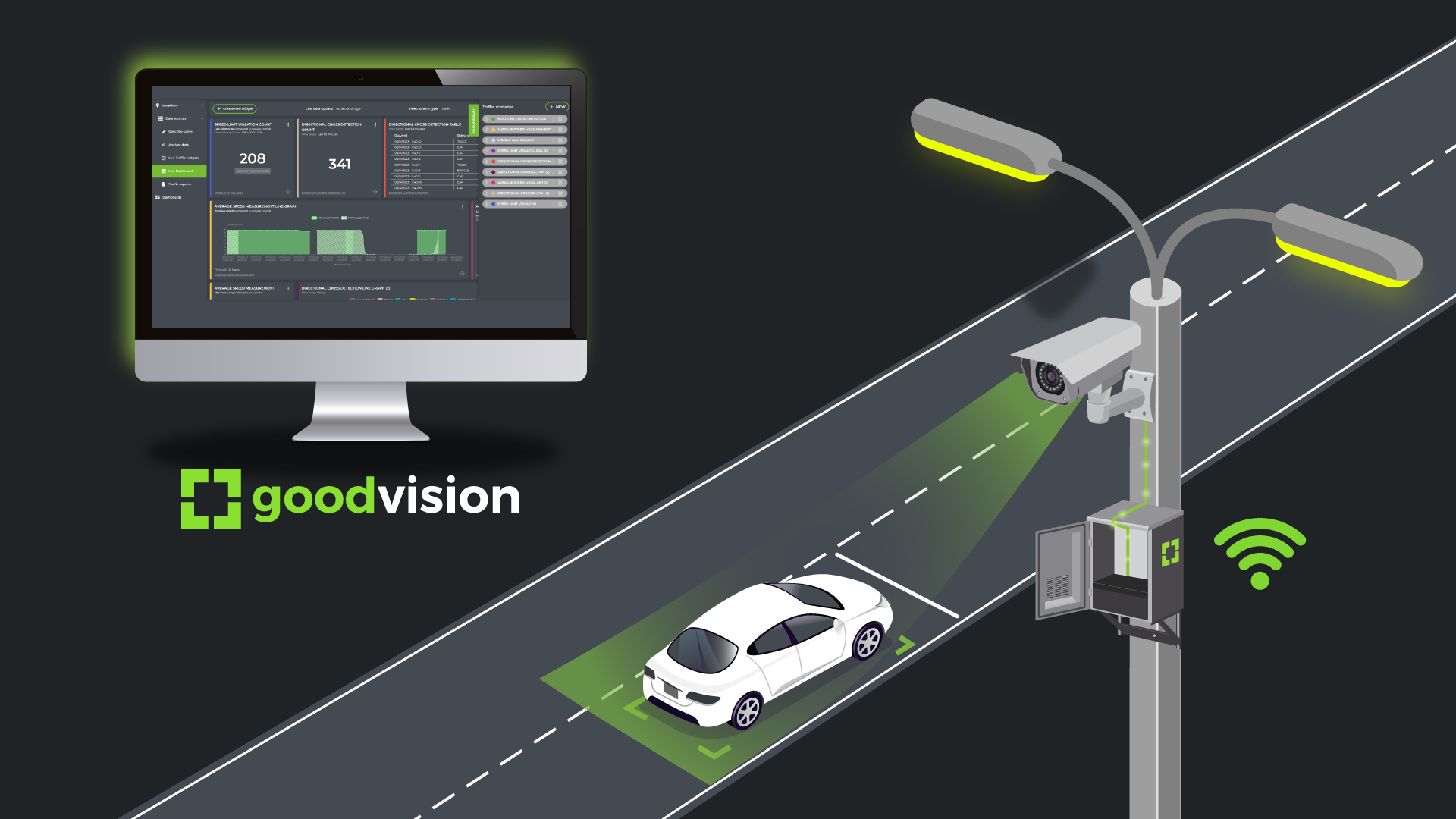
Real-time traffic analytics done your way
Each AI detector is configured individually according to the scene and customer needs. Many factors influence the computing power needed to capture and process traffic streams: resolution, framerate, codec, or number of objects on the scene. Computing power affects the price of the deployment, meaning that we can assign less computing power for simple scenes that don’t require detailed data capture to reduce costs.
For instance, if detecting smaller objects, such as pedestrians or distant vehicles, isn’t necessary at a given location, we can deploy a standard detector that requires less computing power. The same applies to single-use roads such as highways. Conversely, for complex intersections where all traffic needs to be recorded, we can deploy a more powerful detector. Computing power can be adjusted remotely in a matter of minutes, allowing for flexibility when additional resources are needed.
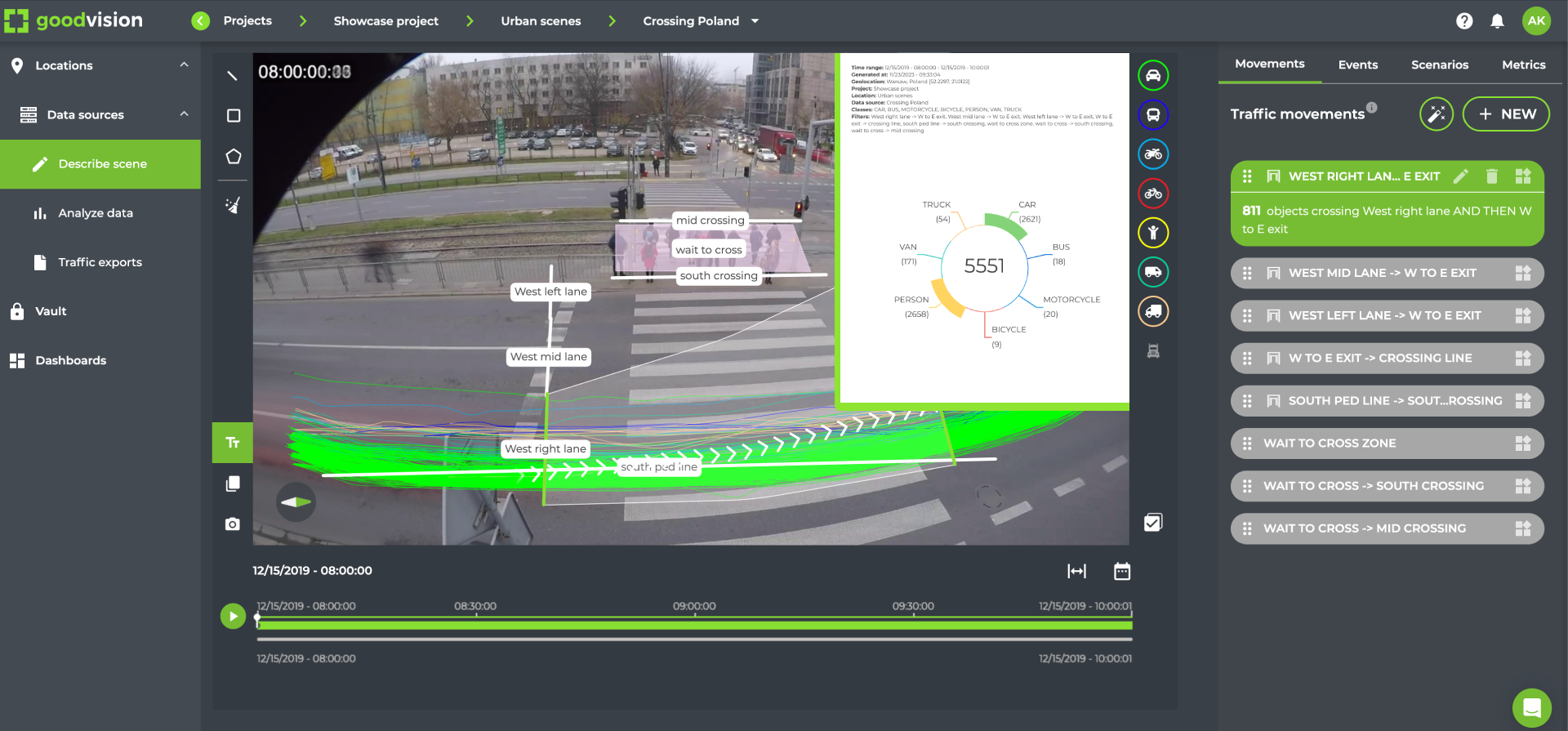
Live Traffic can identify 8 object types, with the option to define custom classes.
Live Traffic can also be connected to third-party traffic control systems and send automated alerts when it detects specific road events. You can use event presets (illegal stop, speed limit violation, wrong-way driving etc.) or set up your event triggers, including virtual loops. Another example is reporting violations like line crossing, ready with the exact speed of the vehicle.
Powerful on their own, unstoppable together
Live Traffic is an extension of our Video Insights analytics platform, meaning that all real-time traffic data extracted from the streams is instantly uploaded and available there. This includes object classification, events, volume counts, saturation flows, and more. Based on the data collected from live streams, users can generate custom traffic reports such as O-D matrix, movement counts, or vehicle lists.
The platform also offers tools made specifically for real-time traffic analysis. After defining the road scenarios users want to track, they can create analytical widgets for each event that will be automatically updated with the data extracted from live streams. By representing traffic records visually, these widgets aid traffic managers in generating insights and making more informed decisions. All widgets are accessible from an intuitive Live Dashboard for an easier overview of the traffic situation.
.png?width=1600&height=637&name=pasted%20image%200%20(7).png)
You can create any number of widgets for every scenario to represent data in multiple ways.
Additionally, users can view traffic streams live in the GoodVision app as long as their device is in the same network as the processing unit.
One tool, many uses
Low deployment costs coupled with the wealth of data provided by video-based real-time traffic analytics make Live Traffic video analytics a powerful tool for any organisation concerned with transportation. What’s more, its customizability makes it suitable for diverse purposes.
- Municipalities can use it as a data source that fuels smart traffic technologies. Real-time traffic data integrated with IoT traffic lights or road barriers enables optimised and data-based traffic management. This way, cities can efficiently minimise congestion and react to changing traffic conditions dynamically.
- Another possible use case is law enforcement. Live Traffic can detect traffic code violations such as illegal turns, stops, or wrong-way driving and immediately notify the responsible services. Violation reports can include the perpetrator’s licence number, vehicle appearance, and event recording.
- For tolling companies, real-time traffic monitoring means the ability to improve the flow of traffic at toll gates and exits. Thanks to licence plate recognition, vehicles can pass through toll gates without stopping, and with live monitoring and alerts, controllers can address congestion as soon as they notice that traffic is starting to build up.
- Highway operators can similarly use Live Traffic to minimise the consequences of maintenance or construction works for drivers while still meeting all requirements. Automated alerts are particularly crucial on highways from a safety standpoint. Vehicle speed and traffic intensity tend to be higher, so any unreported events bear the risk of accidents and casualties. By constantly monitoring road conditions and notifying controllers instantly, Live Traffic helps them react quickly.
Stay on top of the road situation with real-time traffic analytics
To warrant the highest possible safety and efficiency of transportation networks, municipalities, traffic managers, and other mobility-related organisations need as accurate data as fast as possible.
Our article only scratches the surface of Live Traffic and the opportunities it can create. Get in touch with us, and let us tell you about the full extent of real-time traffic analytics for your organisation.


